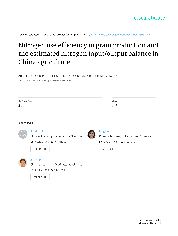摘要
BACKGROUND Understanding the nitrogen (N) use efficiency and N input/output balance in the agricultural system is crucial for best management of N fertilisers in China. RESULTS In the last 60 years, N fertiliser consumption correlated positively with grain production. During that period the partial factor productivity of N (PFPN) declined greatly from more than 1000 kg grain kg1 N in the 1950s to nearly 30 kg grain kg1 N in 2008. This change in PFPN could be largely explained by the increase in N rate. The average agronomic efficiency of fertiliser N (AEN) for rice, wheat and maize during 2000-2010 was 12.6, 8.3 and 11.5 kg kg1 respectively, which was similar to that in the early 1980s but lower than that in the early 1960s. Estimation based on statistical data showed that a total of 49.16 x 106 t of N was input into Chinese agriculture, of which chemical N, organic fertiliser N, biological fixed N and other sources accounted for 58.2, 24.3, 10.5 and 7.0% respectively. Nitrogen was surplus in all regions, the total N surplus being 10.6 x 106 t (60.6 kg ha1). CONCLUSION The great challenge is to balance the use of current N fertilisers between regions and crops to improve N use efficiency while maintaining or increasing crop production under the high-intensity agricultural system of China.
- 出版日期2013-3-30
- 单位中国农业科学院农业资源与农业区划研究所
